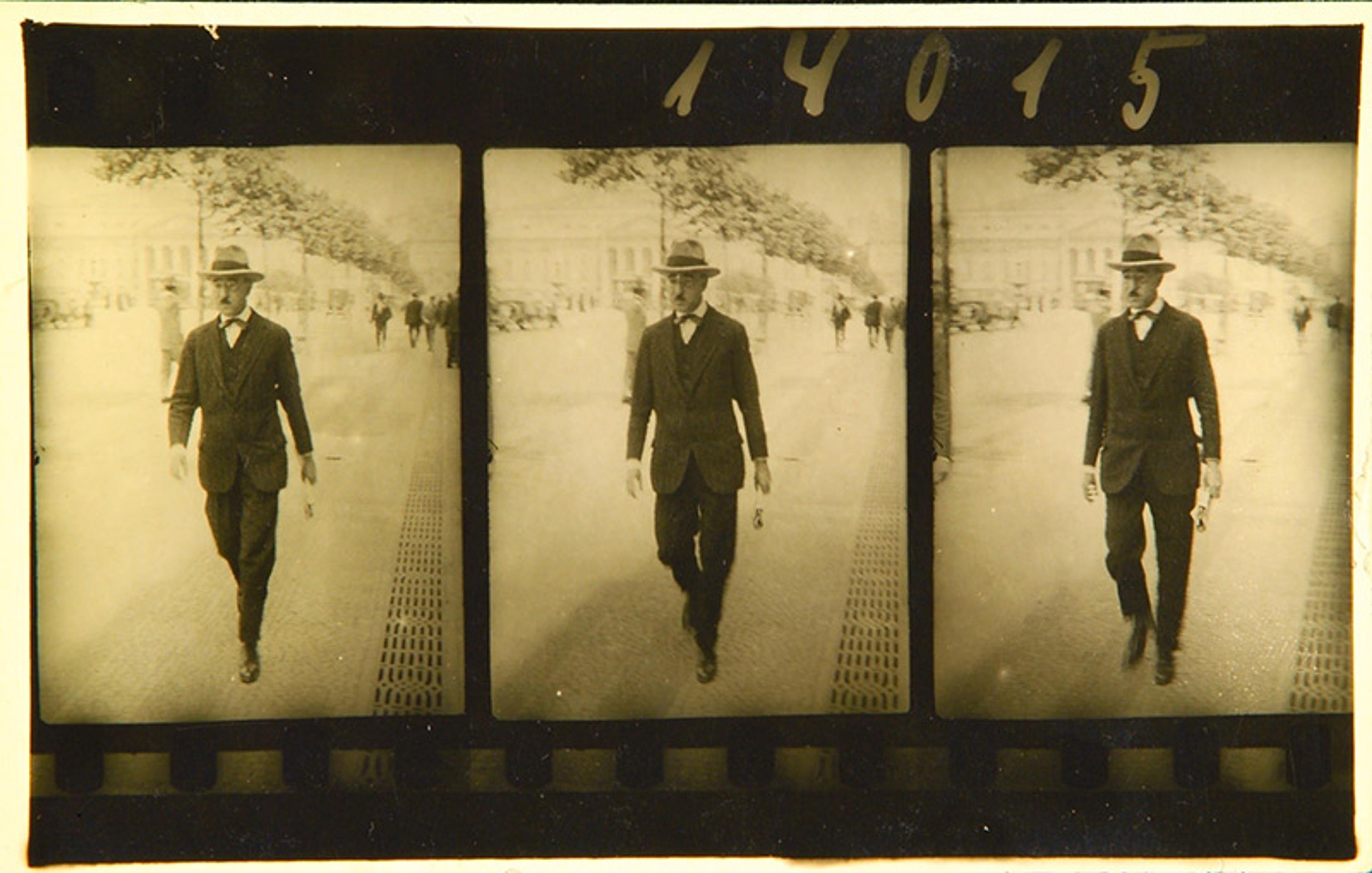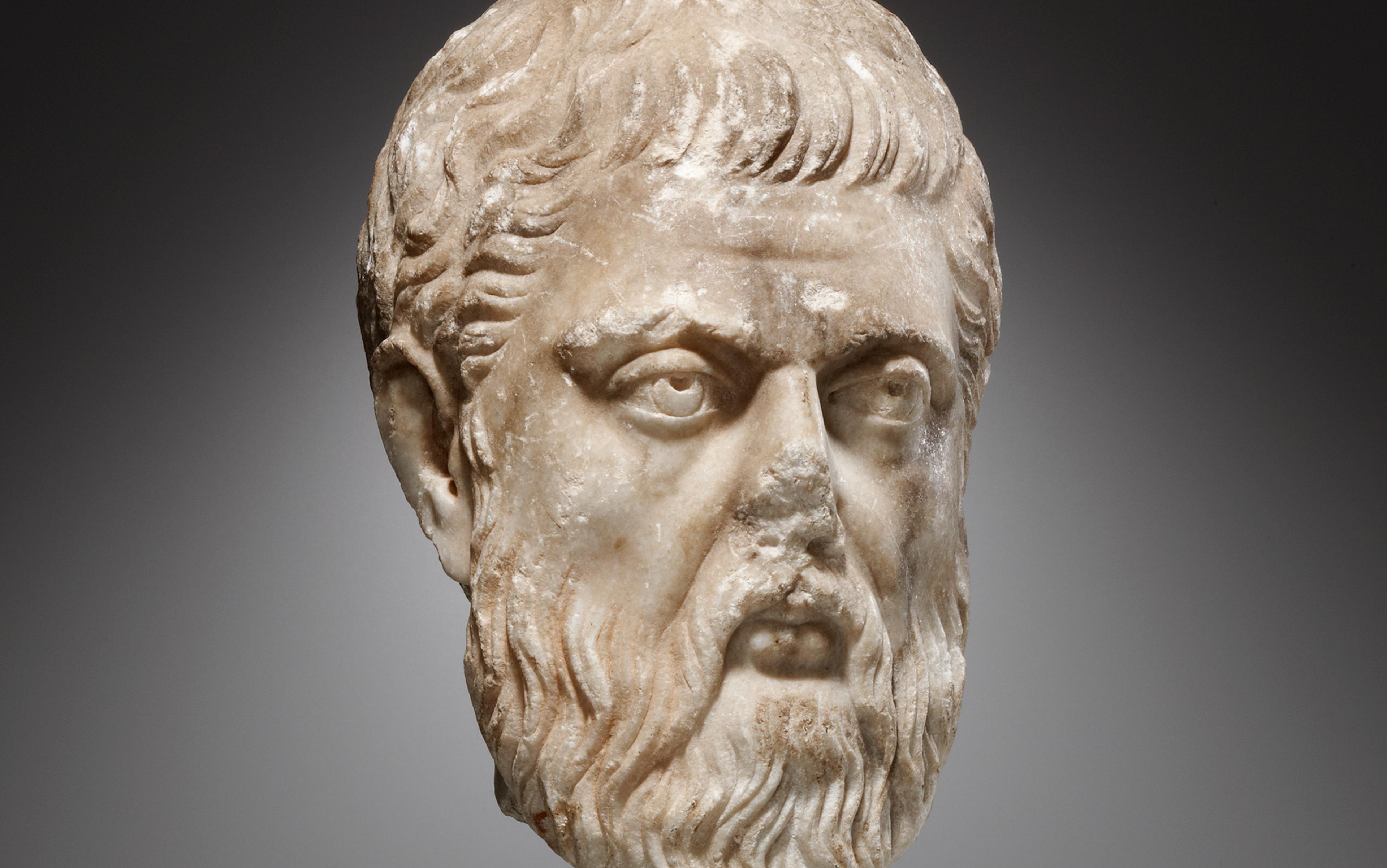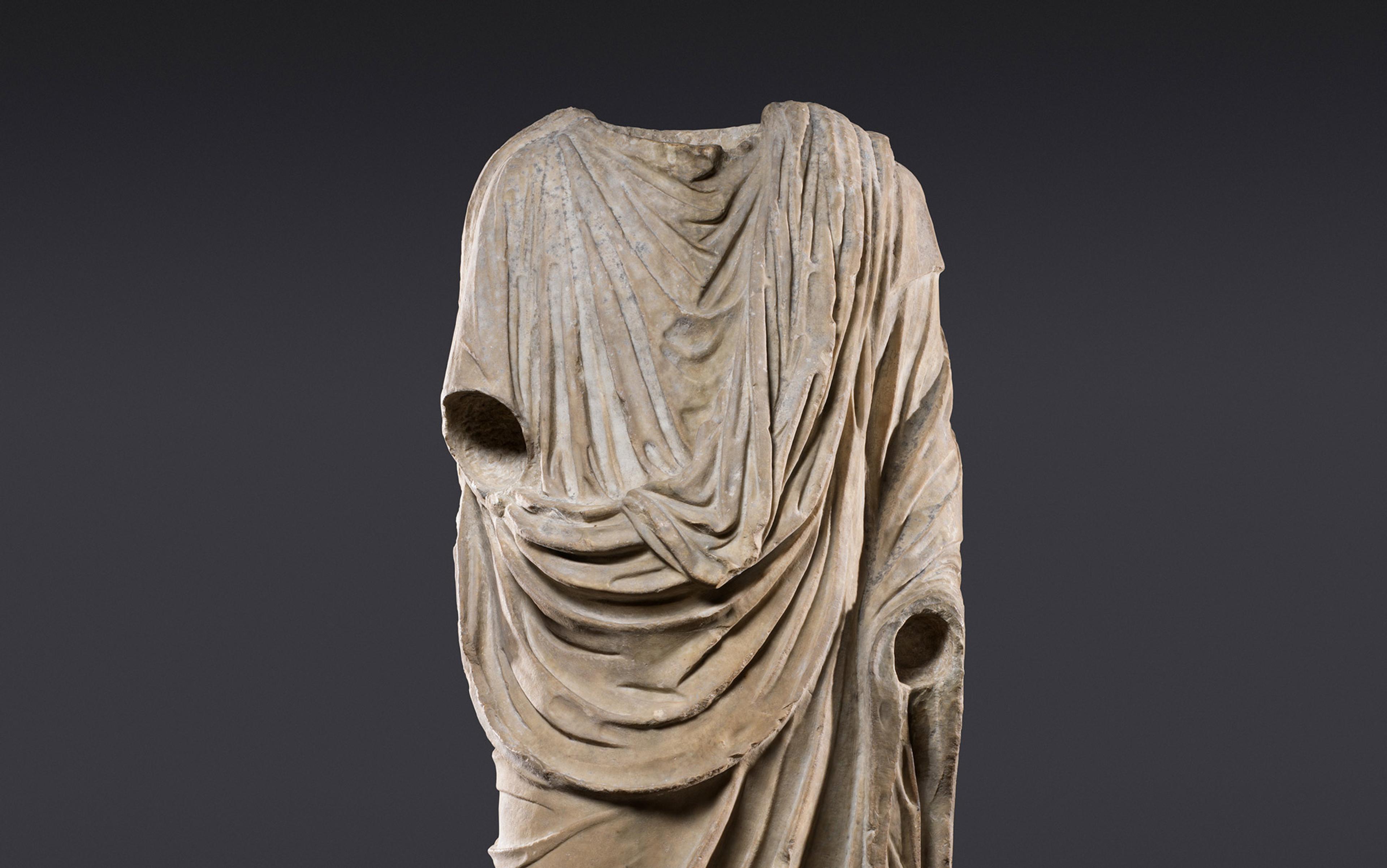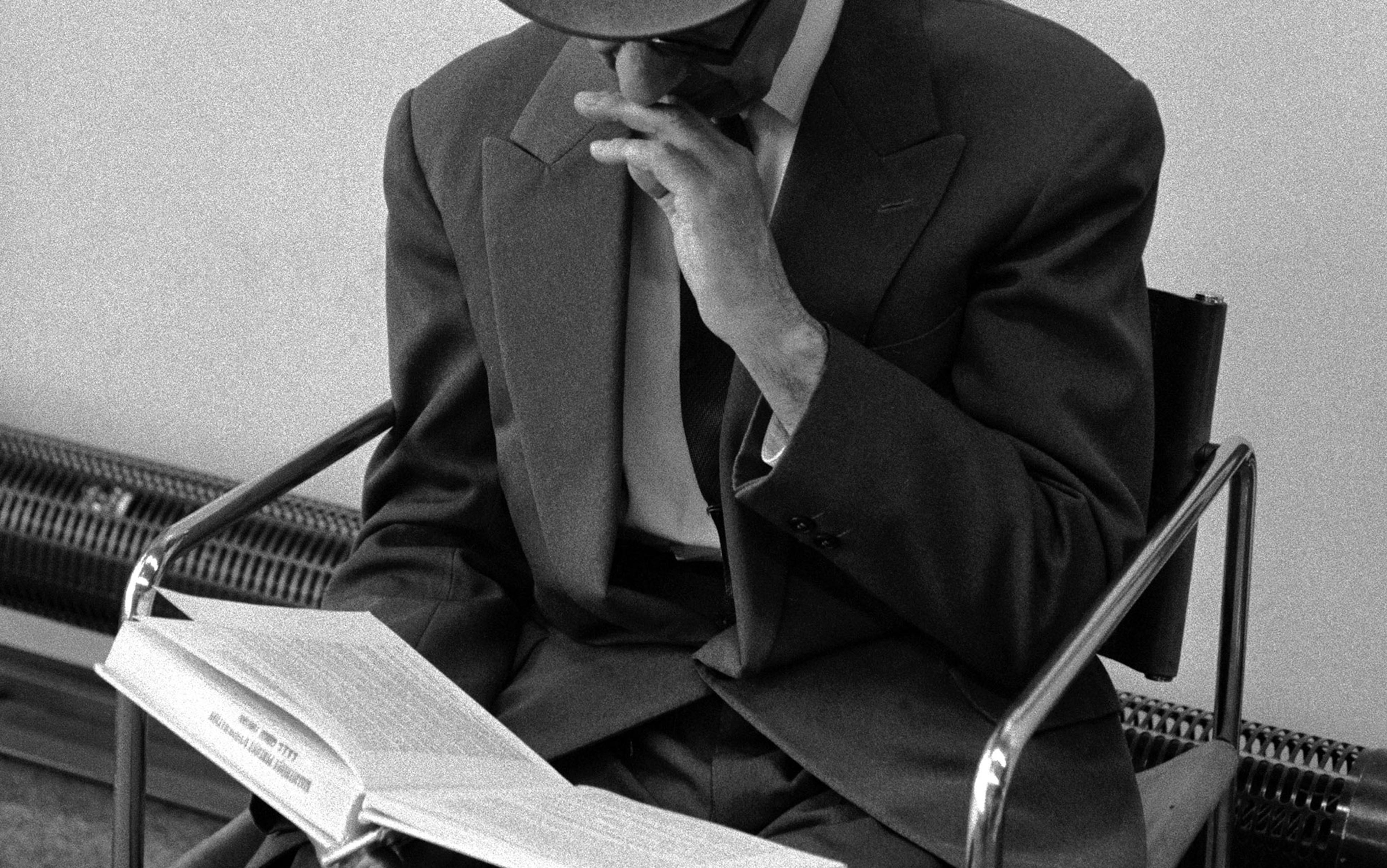In 2017, the Australasian Journal of Philosophy issued a rare retraction, informing their readers that one of their articles was not in fact written by a cat. The short article, a critique of David Lewis’s ‘Veridical Hallucination and Prosthetic Vision’, was published in 1981 under the name of ‘Bruce Le Catt’, a figure with no discernible institutional affiliation or track record of publishing, but who appears to have been familiar with Lewis’s work. As indeed he might have been, being the beloved pet of the great American philosopher.
It may not have come as a surprise to those familiar with Lewis’s work that ‘Bruce Le Catt’ was not the pseudonym of an astute critic, but of Lewis himself. The playfulness of Lewis’s writing is well known: for instance, the paper ‘Holes’ (1970), co-written with Stephanie Lewis, is a dialogue between two characters, ‘Argle’ and ‘Bargle’, on the ontological status of holes as found in Gruyère, crackers, paper-towel rollers and in matter more generally. Nevertheless, the attribution of the 1981 paper to a cat seemed to cross a line. It may have been playful, but it was also deceptive, hence the retraction.
Lewis was not the only 20th-century philosopher to publish using an invented persona. The contents page of the book Explaining Emotions (1980), edited by Amélie Oksenberg Rorty, features the essay ‘Jealousy, Attention, and Loss’ by one Leila Tov-Ruach, listed on the Contributors page as ‘an Israeli psychiatrist, who writes and lectures on philosophic psychology’. Some readers might have noticed that this is a rather unusual name – a pun on laila tov ruach or ‘goodnight wind’ in Hebrew – and might have had their suspicions confirmed by the fact that there is no discernible trace of this psychiatrist elsewhere on the medical or academic record. Indeed, as an erratum on the University of California Press website drily notes, Amélie Oksenberg Rorty and Leila Tov-Ruach are indeed one and the same person.
The case of Tov-Ruach is somewhat different to Bruce Le Catt. Rather than playfully externalising the critique of the originating philosopher’s own arguments, Tov-Ruach’s paper is included side by side with Rorty’s own contributions to a volume that she herself edited. The two write on different topics and have their own biographical entries in the volume but are not in opposition. It is certainly a more elaborate and less obviously tongue-in-cheek intervention than Lewis’s use of Bruce Le Catt as an antagonist.
What are the ethics of this kind of pseudonymous publication? When they realised what had happened, the Australasian Journal of Philosophy and the University of California Press evidently felt it necessary, as a matter of academic ethics, to issue a clarification on the identity of the true authors. They were prompted to do so by the unflagging work of Michael Dougherty, the Sister Ruth Caspar Chair in Philosophy at Ohio Dominican University, who has spent years unmasking cases of misattribution, and downright plagiarism along with murkier, quirkier cases like these. For Dougherty, such cases are primarily about disciplinary morality, amounting to a wilful obstruction of the scholarly endeavour. On the Rorty/Tov-Ruach case, he writes:
It’s odd to have a dialogue with yourself under two names in the published literature. I have no idea why she is doing this. Dr Rorty is a distinguished philosopher, and the use of pseudonyms can impede a genuine history of philosophy.
It is the implied question in Dougherty’s statement that interests me: why is she doing it? Why would any philosopher write under somebody else’s name, pretend to be someone that they are not? If plagiarism is the intellectual sin of taking credit for someone else’s ideas, what are we to think of its opposite: pinning one’s own ideas on somebody else who doesn’t even exist?
While it might seem odd in the world of contemporary journal publication, smuggling ideas under someone else’s name is rather more common in the history of philosophy than you might think. Medieval philosophy in particular abounds with texts that blur the boundaries between anonymity, pseudonymity and straightforward authorship. Consider the various ‘pseudos-’ – from pseudo-Augustine, pseudo-Aristotle, pseudo-Dionysius the Areopagite – that proliferated in the late antique and medieval periods. Many of the medieval scholars used this kind of device to invoke the authority of an older figure for their ideas; humble monks who wrote (if writing under any name at all) under the names of the mighty dead to gain intellectual clout and authority.
Indeed, in a slightly different form, this practice has far deeper roots. Any philosophical dialogue using the names of real figures does something similar: is Plato’s Socrates the ‘real’ Socrates, or a mouthpiece for Plato’s own views, or somewhere in between? Was Plato’s Protagoras the ‘real’ Protagoras, or just a foil for Plato’s own ideas? And, if the latter, is there really anything wrong with this?

Courtesy Casa Fernando Pessoa, Lisbon, Portugal
And what about when the name under which a philosopher writes does not refer to a real individual? Søren Kierkegaard wrote under a great many names: Johannes Climacus, Constantin Constantius, Victorin Victorius Victor, Johannes de Silentio are a few of them, none of whom is anything but the creative imagining of Kierkegaard himself. In fact, it is perhaps more proper to call these personages ‘heteronyms’, as developed later in the works of Fernando Pessoa, in which the different names are not simply alternative labels for an identical author hiding behind the label, but denote fully conceived individuals, each with their own personality, appearance and distinctive literary style. Pessoa himself conjured more than 60 such persons, in addition to two ‘semi-heteronyms’ that constituted a ‘mere mutilation’ of his own personal style, and finally the single ‘orthonym’ that referred to the origin points of all of these names: Pessoa himself.
This thinker, who does not exist, nevertheless takes up a particular perspective on the world
Rorty’s use of an alias is in many ways easier to understand, mainly because she tells us precisely why she wrote under a name that was not her own. Indeed, Leila Tov-Ruach was not her only pseudonym. In addition to an Israeli psychiatrist, Rorty also tried her hand at writing as a Chinese Platonist and, in her edited collection Philosophers on Education (1998), she explains why she chose to write her article on ‘Plato’s Counsel on Education’ under the name of Zhang LoShan:
Ever since teaching a course in the history of philosophy in the People’s Republic of China in 1981, and finding students and colleagues there passionately interested in Plato, I had been trying to see him through their eyes, with their preoccupations … Although I wrote that essay, it is, in a perfectly straightforward way, not strictly speaking mine … It is an experiment I strongly recommend to all serious scholars: surprising features emerge from the exercise.
The aim of writing under the name of this nonexistent philosopher was, in Rorty’s words, ‘intellectual empathy’, understood as the attempt to enter into the mind of another thinker, a kind of exercise. This thinker, who does not exist, nevertheless takes up a particular perspective on the world, a perspective that rests on a different set of assumptions and preoccupations from the author’s. When the pseudonymous author imaginatively occupies such a perspective through the processes of intellectual empathy, they might thereby see things differently (as might readers).
Today, some people might object to the case of Rorty-as-Zhang-LoShan on grounds of cultural appropriation, and perhaps Rorty would admit that this is precisely the point: to appropriate a perspective that is not one’s own, that is not anybody’s at all (though, for her, presumably that wouldn’t have the negative connotations of ‘cultural appropriation’). And perhaps this is why she – and Kierkegaard and Pessoa, but not Plato or pseudo-Augustine – chose names of thinkers who never existed: so as to have the freedom not only to appropriate an existing perspective, but also to create and inhabit one anew.
But none of these examples, from philosophical felines to pseudo-Augustine or imaginary Chinese Platonists, is quite as perplexing as that of the Ḥatäta Zera Yacob. The Ḥatäta, or ‘enquiry’ (the root of which, ሐ-ተ-ተ, in the ancient Ethiopian language of Geʽez literally means ‘to investigate, examine, search’ ) is an unusual work of philosophy for a number of reasons. It is not only a philosophical treatise but also an autobiography, a religious meditation and a witness of the religious wars that plagued Ethiopia in the early 17th century; it presents a theodicy and cosmological argument apparently independent of other traditions of Christian thought; it employs a subtle philosophical vocabulary that is virtually without precursors. Finally, and most perplexingly, the progenitor of these ideas, the Zera Yacob who is the subject of the autobiography and gives his name to the title, may never have existed.
Why might we think this? The text is composed in the voice of one Zera Yacob, a man born to poor parents in ‘the lands of the priests of Aksum’ in northern Ethiopia around the turn of the 17th century. Driven from his hometown by religious conflict between Orthodox ‘kopt’ and Catholic ‘ferenj’, our eponymous narrator Zera Yacob flees to the hills and finds a cave in which he ‘meditated all day on humanity’s quarrels and wickedness, and also on the wisdom of the Lord their creator, who keeps silent when they act wickedly in his name, persecute their neighbours, and kill their own brothers and sisters.’ The basic problem of his philosophy is how to understand how God allowed this violent conflict to take place – a version of the classic problem of evil – and further to understand what, if anything, is true in religion.
In the most strident chapters, Zera Yacob critiques the religious practices and social organisation of his day
Zera Yacob poses the problem by asking how we can decide between two religions whose justifications and standards of justification are internal to their own systems of thought – who ‘decided everything according to [their] own creed’:
Where will I find someone who will decide [on the religions and creeds] truthfully? Because [just as] my religion seems true to me, so does another’s religion seem true to them.
The problem is not only that different groups disagree, but that there seems no way to resolve these disagreements without bloodshed.
His answer is remarkable. The only thing that can decide between competing religious claims is something that every human has inside them: the god-given faculty of lebbuna (variously translated as ‘reason’, ‘intelligence’ and ‘understanding’) that allows us to perceive what is right and wrong, good and bad by means of it being attuned to a kind of pre-established harmony between the creator, creation at large and this faculty itself. Lebbuna is common to kopt and ferenj, man and woman, young and old: truth and goodness is accessible to all, equally. And yet humans do not use it. It is onerous to apply one’s reason, and mankind is by nature lazy, preferring to be led by received wisdom.
The most strident chapters of the book follow, with Zera Yacob using the normative standards set by lebbuna to critique the religious practises and social organisation of his day. He criticises slavery for treating man like a beast; asceticism for perverting natural desires; and the practice of marriage for treating a wife as the slave of a husband.
When the civil unrest ends with the death of the emperor, he returns to society, settling in the town of Enfraz where he finds work and eventually an intellectual disciple in the form of a youth named Walda Heywat, who urges his teacher to write down his reflections before his death. He presents here a vision of the good life as living in harmony with the natural order of creation, earning his sustenance and that of his family by honest work. The historical details of the political background are all accurate, the language of the text beautiful, lyrical Geʽez. So why think that this character, so convincingly evoked, may never have existed?
The troubled afterlife of the text begins when the work is ‘discovered’ in 1852 by a lonely Capuchin monk named Giusto da Urbino in the highlands of Ethiopia. Before this date, there is no mention of the text in the historical record. The work was sent off to da Urbino’s patron back in Paris, the Irish-Basque explorer, linguist and astronomer Antoine d’Abbadie, and placed in the Ethiopian collections of the Bibliothèque Nationale de France. Over the next couple of decades, scholars flocked to consult this fascinating, seemingly unprecedented text. The Ḥatäta was edited and translated into Russian and Latin, and began to gain a wider readership among European intellectuals.
Then in 1920, an Italian Orientalist named Carlo Conti Rossini published an article in the Journal Asiatique, claiming that, far from being a masterpiece of 17th-century Ethiopian thought, the Ḥatäta was in fact a forgery, composed by the man who had claimed to discover it: da Urbino. Conti Rossini had been tipped off by an Ethiopian convert to Catholicism that da Urbino had been scheming with local scholars to create ‘heretical’ and ‘masonic’ works to undermine Catholicism and Ethiopian orthodoxy alike. Conti Rossini now started seeing proof everywhere, adducing philological arguments and cultural speculations in equal measure to the conclusion that this book was written by an Italian in the 19th century, not an Ethiopian in the 17th.
Conti Rossini was the pre-eminent Ethiopianist of interwar Europe, and his arguments were eventually accepted by almost all scholars, including those who had spent so long translating and commentating upon the work. But Conti Rossini was also a colonial administrator in Italian East Africa, and a supporter of Mussolini’s invasion of Ethiopia, even going so far as to publish an article in 1935 titled ‘Ethiopia Is Incapable of Civil Progress’, arguing that the country could, indeed should, be colonised by a ‘civilising’ power, explicitly invoking his refutation of the Ḥatäta as part of his argument.
If faking a passport gets you somewhere, what does a fake work of philosophy get you?
The argument has raged for more than a century now, with new arguments being made on both sides. Claude Sumner, a Jesuit missionary who called himself ‘Canadian by birth, Ethiopian by choice’, made a passionate case for an Ethiopian authorship in his five-volume Ethiopian Philosophy (1974-8), building on the argument of Ethiopian scholars like Alemayyehu Moges and Amsalu Aklilu. The French historian Anaïs Wion has produced an ingenious argument against an Ethiopian authorship in her series of articles The History of a Genuine Fake Philosophical Treatise (2013), and these arguments have been taken up by scholars like Fasil Merawi and Daniel Kibret back in Addis Ababa. Finally, the late, great scholar of Ethiopian manuscripts Getatchew Haile reversed his position, held for half a century, that the work was a forgery in a paper published shortly before his death in 2021. It is no exaggeration to say that today, as interest in the Ḥatäta begins to peak once again with a series of new books, podcasts and the publication of a new translation of the Ḥatäta, the question of its author’s existence is in limbo.
The difference between the case of Leila Tov-Ruach and Zera Yacob is that the identity of the author of the Ḥatäta really seems to matter. Many Ethiopian intellectuals are understandably proud of the work, holding it up as a masterpiece of 17th-century literature and a foundation of an alternative, specifically Ethiopian path to modernity. And they are understandably furious at the idea that the writings of a fascist intellectual might deprive one of their greatest geniuses of his rightful credit.
In Europe and the United States, philosophers keen to diversify and decolonise their curriculums have seized on Zera Yacob as evidence of an ‘African Enlightenment’, as an African Descartes or Kant. As Sumner put it, the Ḥatäta demonstrates that ‘modern philosophy, in the sense of a personal rationalistic critical investigation, began in Ethiopia with Zera Yacob at the same time as in England and in France.’ If the work is a forgery, it seems that the Ḥatäta cannot fulfil this lofty role allotted to it. The implication seems to be that, if it is not written by a 17th-century Ethiopian scholar, it is not all that interesting or important after all.
So it seems that we do very much care who wrote it. But should we? The assumption on the side of both the proponents and opponents of authenticity is that either the work is totally genuine, in which case it can be used to diversify and decolonise, or else it is totally fake, a ‘mere forgery’ and of little interest, other than perhaps as a case of late-colonial cultural appropriation (or immersion, if one prefers).
But what is a ‘mere forgery’ anyway? If you forge a passport, you are creating a fake document that permits you to cross borders as if it were real. If you forge a work of art, you are creating a convincing (and therefore lucrative) fake that can be attributed to a known artist and sold as if it were genuine. But what might the forging of a work of philosophy be, beyond attributing the work to someone else, à la pseudo-Augustine or pseudo-Aristotle? If faking a painting gets you something and faking a passport gets you somewhere, what does a fake work of philosophy get you?
Presumably, what we care about most in a philosophical text are its arguments, its attempts to get at the truth and its means of getting there. If the argument is what interests us, then should the authorship matter, given that the argument is exactly the same, regardless who wrote it? Of course, historical context is important, both for understanding how the text might have come to be and what the text means. But unless this exploring of context is employed in the service of understanding and elucidating the arguments, we are treating the work as a historical curiosity rather than a source of insight. In the case of the Ḥatäta Zera Yacob, this would be a mistake, for the arguments are powerful and abidingly relevant. These arguments – about the causes of human suffering and conflict, the epistemology of disagreement and the twin temptations of relativism and blind absolutism, the relation between the world and our cognitive faculties – are precisely what tends to fall out when the discussion of the Ḥatäta focuses exclusively on the topic of authenticity.
We might conclude by offering a different sense of philosophical forgery, one less concerned with the cultural politics of a particular text than the words it leaves on the page. Forging in this sense might have more to do with the work of the blacksmith than of the counterfeiter. Rather than forging as deception, we might think of forgery as creation, namely as the creation of new words and, with it, new ideas. Consider that whoever wrote the Ḥatäta did so in a language, namely Geʽez, that previously quite literally did not have the words for expressing its most central ideas. Whoever wrote the Ḥatäta forged a philosophical-conceptual vocabulary.
This process of linguistic innovation, of coining new terms and adapting existing words to new meanings is by no means unique to Geʽez. It is more than 20 centuries since Cicero attempted to ‘teach philosophy to speak Latin’, not only by importing originally Greek words into Latin (dialectica, politica), but by teaching philosophy new terms (moralia, naturalis) from his native language. In a way, it takes place every time philosophy learns to ‘speak’ in a new language, including our own: we owe a great many words, both arcane (‘quiddity’, ‘apperception’) and commonplace (‘politics’, ‘nature’ and ‘self’) to the translation of philosophy into English in the 16th and 17th centuries. But rarely has it happened so suddenly, in such a concentrated way in a single text. This is impressive enough if its author is a 17th-century Ethiopian named Zera Yacob. If it’s the work of a 19th-century forger, it is an utterly astounding work of linguistic and cultural immersion.
Ultimately, the words on the page should be more philosophically interesting than the identity of the person who wrote them, and therefore the Ḥatäta (and, by extension, other such contested texts) should be judged on the philosophical quality and linguistic innovations, not on the name at the top of the page. There is a sense in which the identity of an author matters. Rorty wrote Tov-Ruach and Zhang LoShan into existence, and in doing so created two distinct philosophical voices, just as Kierkegaard conjured countless original perspectives. Plato wrote the perspectives of Glaucon, Protagoras and Thrasymachus in a way that may or may not have corresponded to their real views. Zera Yacob may be one such voice that is an unknowable mix of real historical individual and literary creation. But, then again, so is Socrates.






